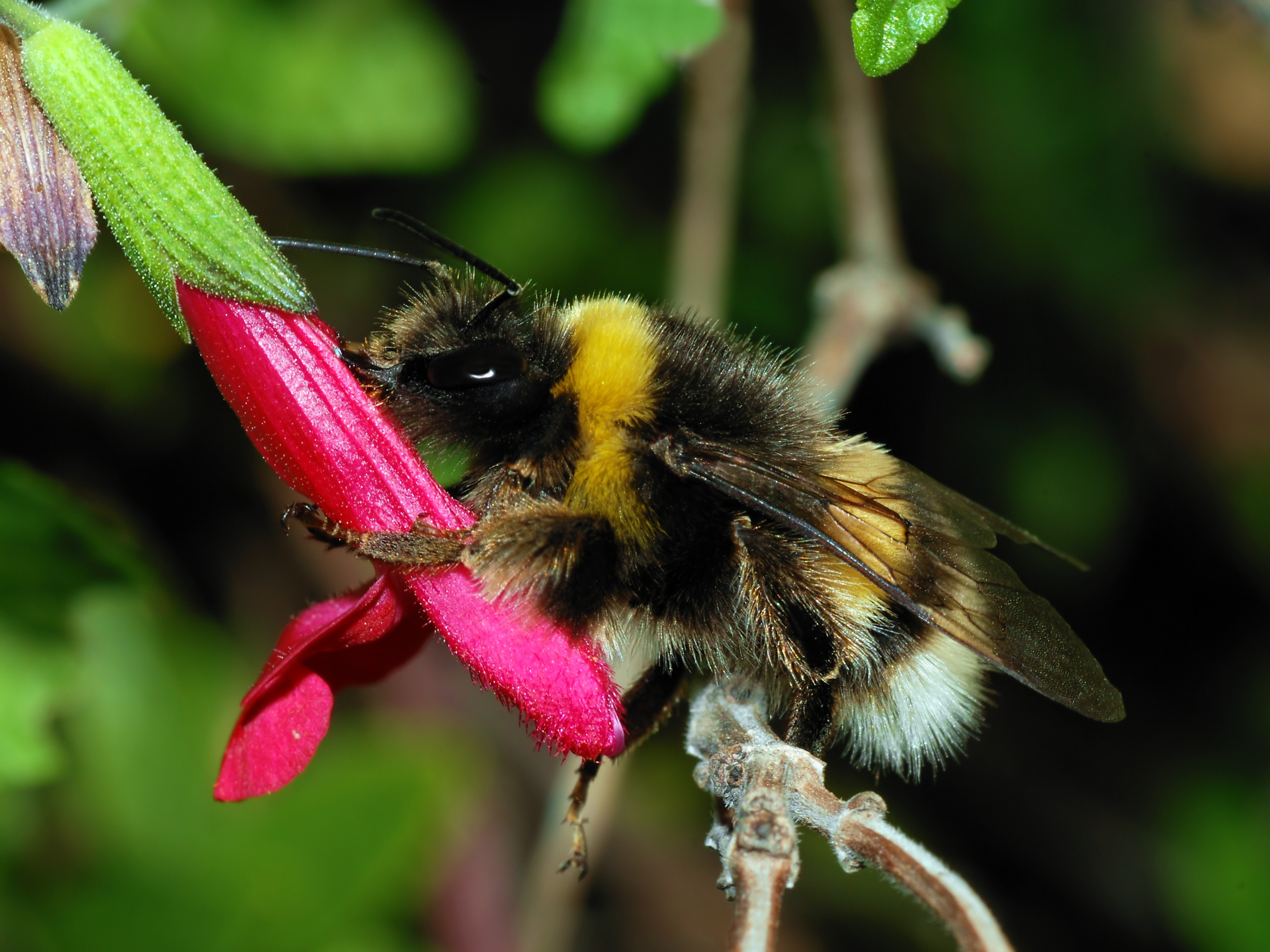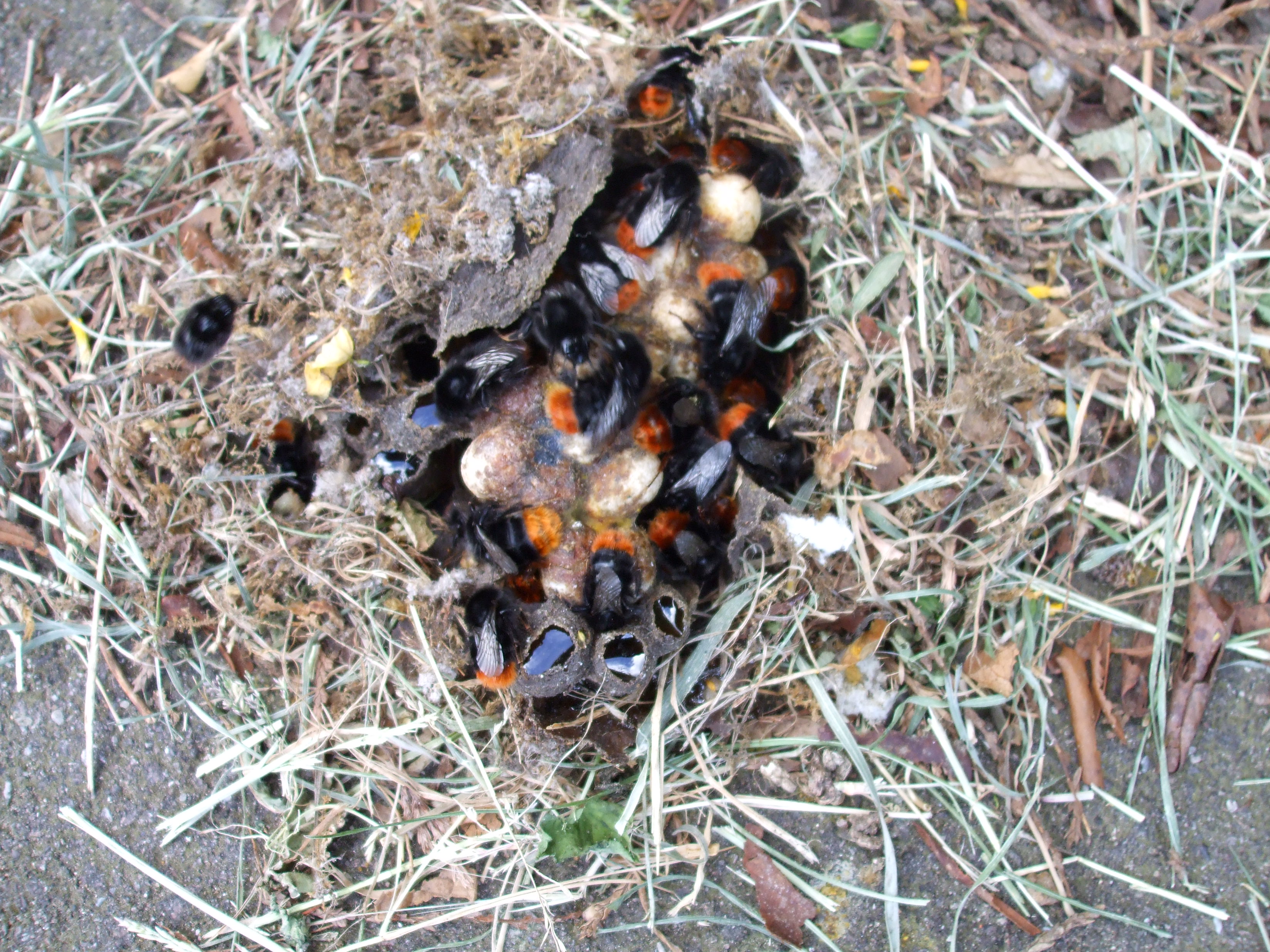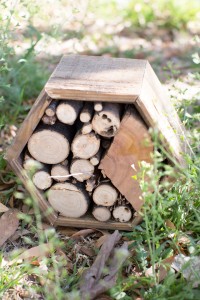More on Bumblebees, Part one
There are over two-hundred and fifty species of bumblebee (also written bumble bee). The Sonoran bumblebee of Arizona is a beautiful yellow and black bee. Other varieties bost different variations in color. A Bumblebee is quite large measuring from 14 to 18 millimeters long (.7 of an inch). The queens are even larger. Queen Bumblebees and Queen Carpenter bees are the largest bees found in the United States!

Worker buff-tailed bumblebee (Bombus terrestris)
Bumblebees don’t make a hive they nest. Like there solitary cousins they prefer to take up residence in an abandoned site such as a mouse den. Bumblebees live in small colonies of up to about fifty members but have been known to colonize with only twenty members and has gone on record of having as great as seventeen-hundred members. But fifty is about the normal range for a colony of wild bumblebees.
Bumblebee hair is called pile, and it is as fuzzy to the touch as it appears to the eye. Like tiny flying teddy bears, you may have seen them buzzing around in your yard, bumping into things with a haphazard flight pattern. However, their flight pattern is far from random. New research shows that the bumblebees remember the quickest route to their pollen and nectar source.
The bumblebee’s lifecycle begins in spring. When temperatures rise, it wakes a queen that has been hibernating in the soil. After finding a suitable nest, a bumblebee secretes wax from her underbelly and makes pots to keep nectar in. All the nectar she gathers goes into this nectar pots. Some refer to this nectar as honey, but it never goes through the same process as what honey bees do to make the yummy sticky stuff. Pollen is gathered and stored as well. Nectar and Pollen are what bumblebees eat.
In early summer, the first brood hatches. Queens have been known to warm their larvae—just as a bird sits on her eggs to keep them warm. All the offspring at this time are worker females. Like honey bees, some workers forage, clean, or guard the nest. Forager bees will continue to bring back pollen and nectar for food, but since the nest has now developed the queen remains home laying eggs and telling her workers what to do. Males are born in the late summer near mating season. A male’s only purpose is to impregnate the queen.
Bumblebees don’t make much honey, but they sure can pollinate. Bumblebees are buzz-pollinators. Their wings beat 130 times or more per second. Bees also bite down on certain types of flowers to get them to give up the goods. They combine this with another process called buzz pollination or sonication.
This vibration makes plants release more pollen per flower. Buzz pollination helps the plant to produce more fruit.
Bumblebees do not store up food as their colonies do not have the same life expectancy as honeybees. Only new queens will survive and hibernate through the winter by feeding and building up their fat reserves. The colony dies, but the circle of life continues. That is unless the bumblebees are working for a commercial farmer. Commercial farmers use bumblebees in a controlled environment year round. “The nest has a lifespan of eight to 12 weeks, after which the bees die. Growers start with a certain number of hives, and then introduce more on a weekly or bi-weekly basis for even pollination.” For strawberries, it could take 10 times the number of employees to hand-pollinate crops at the same rate as bees.
Watch for Bumblebees Part Two. Learn to make a place to invite them into your garden and learn other interesting facts!
Sources
http://journals.plos.org/plosbiology/article?id=10.1371/journal.pbio.1001391
http://naturemappingfoundation.org/natmap/facts/bumblebee_k6.html
https://en.wikipedia.org/wiki/Bumblebee
http://www.greenhousegrower.com/production/using-bees-in-the-greenhouse-for-natural-pollination/.
https://www.fs.fed.us/wildflowers/pollinators/pollinator-of-the-month/SonoranBumblebee.shtml




One thought on “More on Bumblebees, Part one”